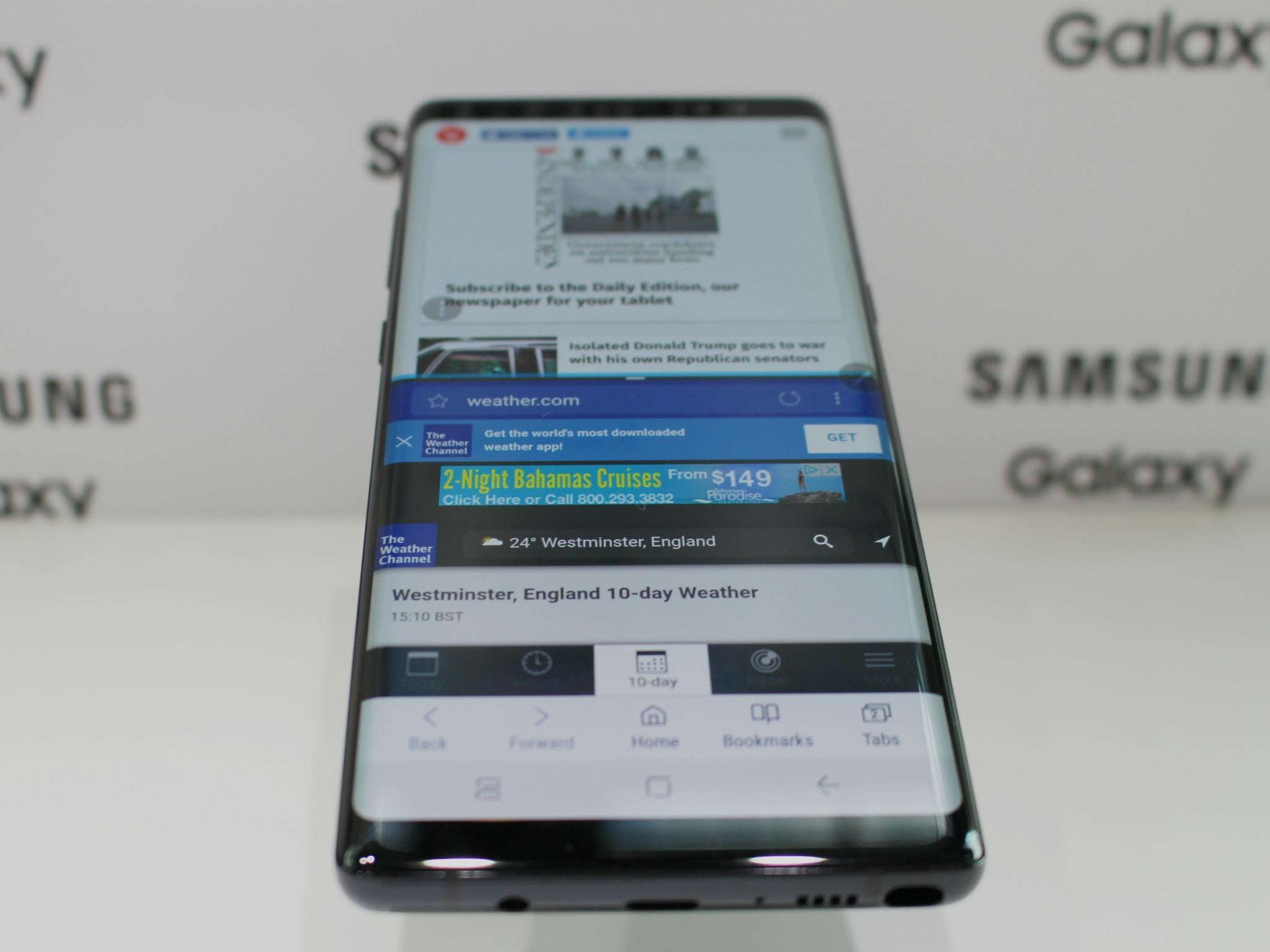Samsung Galaxy Note 8: Why its new camera is so exciting
The dual-lens setup marks a big step for the company
Your support helps us to tell the story
From reproductive rights to climate change to Big Tech, The Independent is on the ground when the story is developing. Whether it's investigating the financials of Elon Musk's pro-Trump PAC or producing our latest documentary, 'The A Word', which shines a light on the American women fighting for reproductive rights, we know how important it is to parse out the facts from the messaging.
At such a critical moment in US history, we need reporters on the ground. Your donation allows us to keep sending journalists to speak to both sides of the story.
The Independent is trusted by Americans across the entire political spectrum. And unlike many other quality news outlets, we choose not to lock Americans out of our reporting and analysis with paywalls. We believe quality journalism should be available to everyone, paid for by those who can afford it.
Your support makes all the difference.Why would you buy the Samsung Galaxy Note 8? Well, for the luxuriously big screen, for a start. If you like the idea of a 6.3-inch display crammed into a much-smaller-than-you’d-have-imagined body, then the Note 8 is off to a good start.
But I’d say the killer bonus with the Note 8 is the rear camera setup.
For a start, it’s the first dual-camera from Samsung, a company known for excellent snappers on phones like the Galaxy S8, for instance.
Dual cameras are implemented in different ways on smartphones. On the Nokia 8, for instance, there are two 13-megapixel sensors. One is monochrome, which can suck in more light faster and the other is colour. Since the colour sensor isn’t as fast, it has optical image stabilisation to help. Both sensors shoot together for the best, sharpest images, though you can opt for the black-and-white one on its own, or indeed colour on its own, if you prefer.
This system is also used on Huawei and Honor flagship cameraphones.
But Samsung has gone for two colour sensors, both 12-megapixels. One is wide-angle, the other telephoto.
This is the same as on the iPhone 7 Plus, and has the advantage that it somewhat overcomes the limitations of zoom on a smartphone’s camera. Because there’s no possibility of including optical zoom on a phone without it being implausibly thick, phones use digital zoom – essentially just cropping the centre of the image with a consequent drop in resolution.
With two lenses, you effectively overcome this digital zoom in two places, when the camera zoom is set to 1x or 2x, as that’s when each sensor delivers its highest resolution – though other zoom levels, say 1.5x or 7x use digital zoom, too.
On Samsung’s phone, as you zoom in, the sensors switch, very smoothly in my tests, from one to the other as the zoom goes from, say, 1.9x to 2x. Both sensors have optical image stabilisation, by the way.

Samsung has another thing in common with Apple’s setup: you can shoot with both sensors simultaneously to create a bokeh effect in what Apple calls Portrait Mode and is here named Live Focus. This is where your subject is in pristine focus and the background artfully blurred.
It’s an effect created organically on high-end SLR cameras by sumptuous lenses but replicated here by software alone. Though this ultimately doesn’t quite match the effect from expensive glass and it can often blur all background elements where true bokeh maximises blurred light points, it’s a neat idea and works well here.
But Samsung does more: for a start, the bokeh effect can be adjusted both as you shoot and in retrospect. More than that, you can adjust exactly how blurred the background should be. As you shoot you can drag a slider to widen the aperture to its maximum – which gives lowest depth of field and therefore most background blur. The wide-angle lens has a maximum aperture of f/1.7, great for lower light situations, and the telephoto’s aperture is almost as wide-open at f/2.4.
Also, when you shoot both cameras together in what’s called Dual Capture mode, it saves both images separately, so you have two shots to choose from, a close-up and a wide-angle shot with the whole background. This happens automatically, though you can disable this feature if you wish.
The optical image stabilisation on the phone is pretty impressive, too. Although I have only seen this in demonstration circumstances, it managed to compensate for motion by placing the phone in a vibrating box – the screen showed a stable, static shot with no vibration.
Cameras are crucial when it comes to choosing a smartphone, and if Samsung’s new setup is as good in real-world use as it is in the studio, something we’ll put to the test in due course, it could be a winning feature for the Note 8.

Join our commenting forum
Join thought-provoking conversations, follow other Independent readers and see their replies
Comments